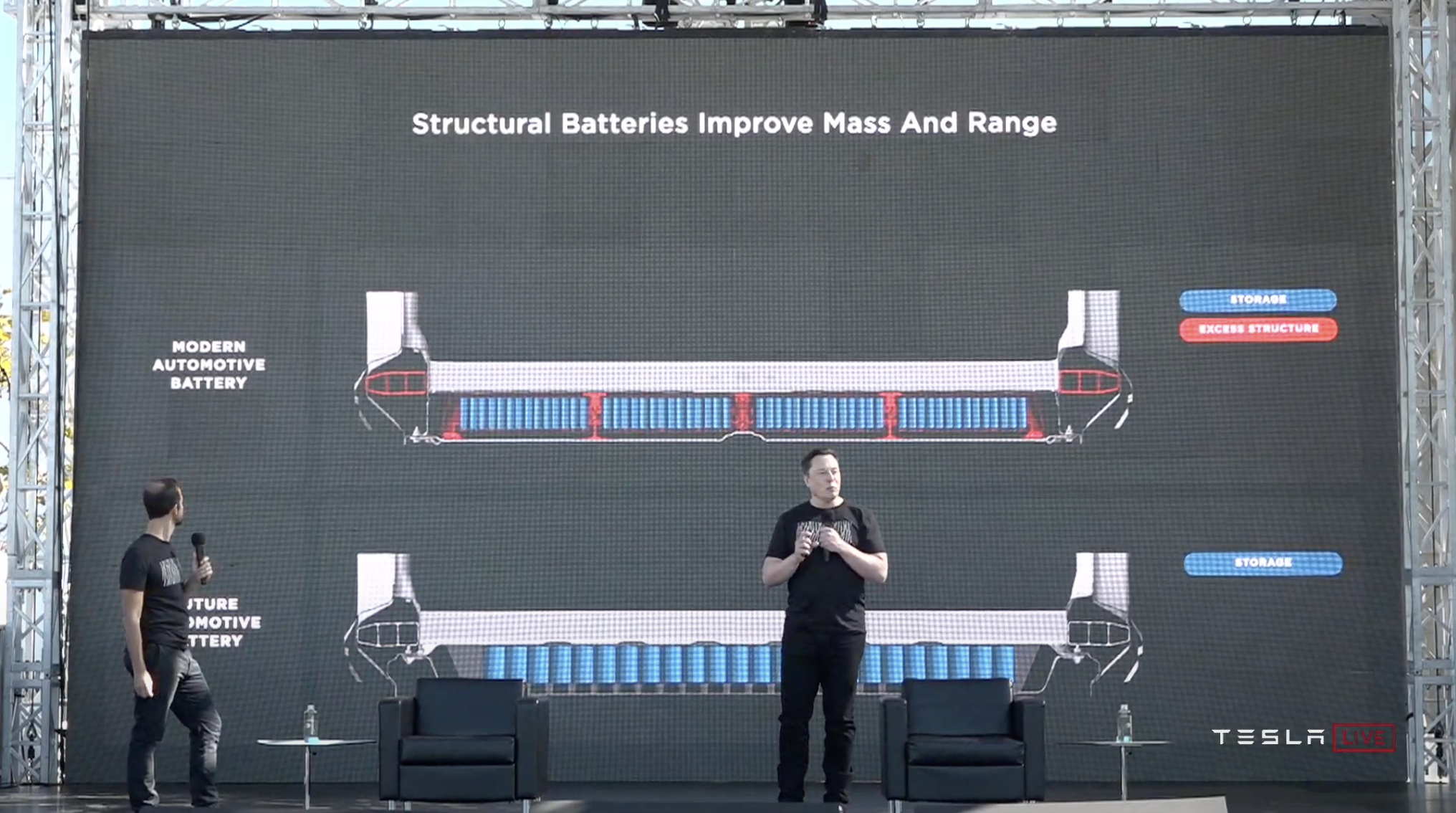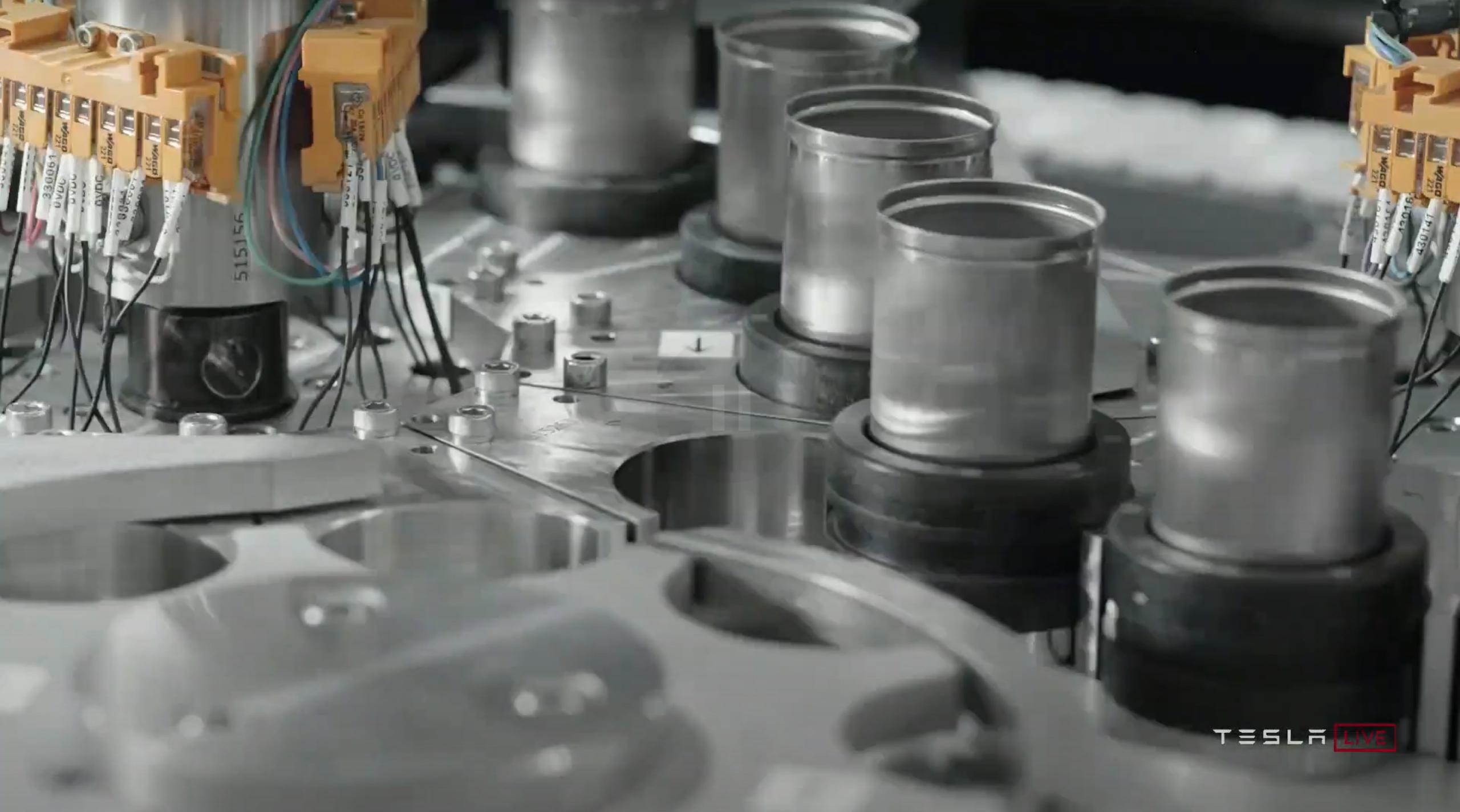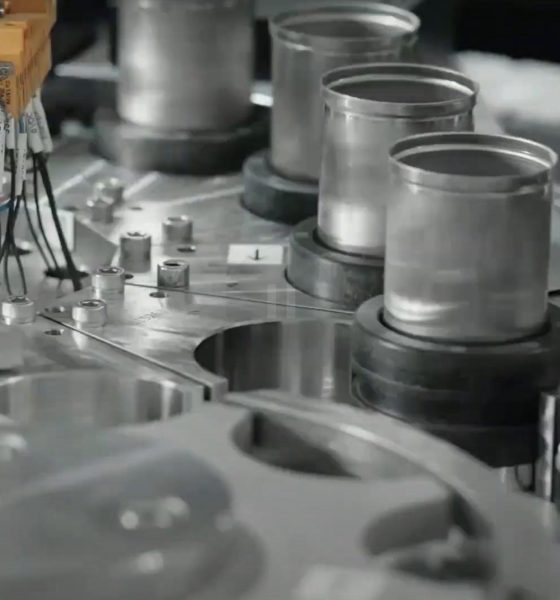Tesla has finally updated the public about the development of its 4680 battery cells, giving new details regarding the development and performance of the new chemistry and additional details about the structural battery pack and how it is performing in crash tests.
4680 Battery Cell
Unveiled at Tesla Battery Day in September 2020, the 4680 battery cell is set to be arguably the most crucial technological development in the company’s mission to accelerate the transition to sustainable energy. During the presentation last year, CEO Elon Musk and VP of Powertrain Drew Baglino outlined the capabilities of the new 4680 battery cell, highlighting five times the energy, a sixteen percent increase in range, six times the power, for less money. The event revealed Tesla’s lengthy research into the 46-millimeter tabless cell and how it performed most efficiently in charging. At the event, Musk said that Tesla is “starting to ramp up production at our pilot 10 GWh factory just around the corner.” Since then, updates have been hard to come by, but we know that companies are building prototypes of the cell and giving them to Tesla in attempts to win a huge contract.
Tesla debuts new 4680 battery cell: 500% more energy, 6X power, range increase
Testing and Efficiency
Tesla said that it has successfully proven the performance and lifetime of the new cell through rigorous testing processes. As of right now, the only thing that remains is ironing out the manufacturing processes of the cell, which continue to plague Tesla’s production output.
The company stated:
“We have successfully validated performance and lifetime of our 4680 cells produced at our Kato facility in California. We are nearing the end of manufacturing validation at Kato: field quality and yield are at viable levels, and our focus is now on improving the 10% of manufacturing processes that currently bottleneck production output. While substantial progress has been made, we still have work ahead of us before we can achieve volume production.”
The cell’s development is evidently coming along great, according to the automaker’s analysis. The cell is set to be utilized in the Model Y produced at Giga Texas and Giga Berlin. Both facilities are set to begin manufacturing the all-electric crossover later this year.
Manufacturing has always been one of the most complex riddles that automakers, Tesla included, need to solve to improve efficiency and accuracy. It is a never-ending battle, and finding new and more effective ways to produce and manufacture products accurately and with high quality becomes more complex, despite technological advances. The volume production of the 4680 cell is being held up by the final 10% of manufacturing processes that need to be figured out. However, with less than a year of knowing about the facility, Tesla has evidently made tremendous strides in the manufacturing efforts of the cell, and the company could see robust developments and improvements in production after these bottlenecks are solved.
Finally, Tesla also shed more light on the development of the 4680 structural battery pack. Tesla outlined details on this at its Battery Day event as well, stating that the battery pack would be a part of the vehicle’s increased strength and rigidity. It all came down to design.
Credit: Tesla
“The non-cell portion of the battery has negative mass,” Musk said. “We saved more mass in the rest of the vehicle than in the non-cell portion of the battery. So how do you really minimize the mass of the battery? Make it negative.”
The design increased structural rigidity and stiffness, preventing deformation in the event of a crash. However, testing needed to be performed, and Tesla is doing it in-house. The company stated:
“Internal crash testing of our structural pack architecture with a single-piece front casting has been successful.”
Tesla beat Wall Street estimates by posting a revenue of $11.958 billion, non-GAAP Earnings per Share of $1.45, profitability of $1.3 billion, and a free cash flow of $619 million.
Tesla will hold its Q2 2021 Earnings Call at 5:30 PM EST, 2:30 PM PST.

News
Tesla starts showing how FSD will change lives in Europe
Local officials tested the system on narrow country roads and were impressed by FSD’s smooth, human-like driving, with some calling the service a game-changer for everyday life in areas that are far from urban centers.

Tesla has launched Europe’s first public shuttle service using Full Self-Driving (Supervised) in the rural Eifelkreis Bitburg-Prüm region of Germany, demonstrating how the technology can restore independence and mobility for people who struggle with limited transport options.
Local officials tested the system on narrow country roads and were impressed by FSD’s smooth, human-like driving, with some calling the service a game-changer for everyday life in areas that are far from urban centers.
Officials see real impact on rural residents
Arzfeld Mayor Johannes Kuhl and District Administrator Andreas Kruppert personally tested the Tesla shuttle service. This allowed them to see just how well FSD navigated winding lanes and rural roads confidently. Kruppert said, “Autonomous driving sounds like science fiction to many, but we simply see here that it works totally well in rural regions too.” Kuhl, for his part, also noted that FSD “feels like a very experienced driver.”
The pilot complements the area’s “Citizen Bus” program, which provides on-demand rides for elderly residents who can no longer drive themselves. Tesla Europe shared a video of a demonstration of the service, highlighting how FSD gives people their freedom back, even in places where public transport is not as prevalent.
What the Ministry for Economic Affairs and Transport says
Rhineland-Palatinate’s Minister Daniela Schmitt supported the project, praising the collaboration that made this “first of its kind in Europe” possible. As per the ministry, the rural rollout for the service shows FSD’s potential beyond major cities, and it delivers tangible benefits like grocery runs, doctor visits, and social connections for isolated residents.
“Reliable and flexible mobility is especially vital in rural areas. With the launch of a shuttle service using self-driving vehicles (FSD supervised) by Tesla in the Eifelkreis Bitburg-Prüm, an innovative pilot project is now getting underway that complements local community bus services. It is the first project of its kind in Europe.
“The result is a real gain for rural mobility: greater accessibility, more flexibility and tangible benefits for everyday life. A strong signal for innovation, cooperation and future-oriented mobility beyond urban centers,” the ministry wrote in a LinkedIn post.
News
Tesla China quietly posts Robotaxi-related job listing
Tesla China is currently seeking a Low Voltage Electrical Engineer to work on circuit board design for the company’s autonomous vehicles.

Tesla has posted a new job listing in Shanghai explicitly tied to its Robotaxi program, fueling speculation that the company is preparing to launch its dedicated autonomous ride-hailing service in China.
As noted in the listing, Tesla China is currently seeking a Low Voltage Electrical Engineer to work on circuit board design for the company’s autonomous vehicles.
Robotaxi-specific role
The listing, which was shared on social media platform X by industry watcher @tslaming, suggested that Tesla China is looking to fill the role urgently. The job listing itself specifically mentions that the person hired for the role will be working on the Low Voltage Hardware team, which would design the circuit boards that would serve as the nervous system of the Robotaxi.
Key tasks for the role, as indicated in the job listing, include collaboration with PCB layout, firmware, mechanical, program management, and validation teams, among other responsibilities. The role is based in Shanghai.
China Robotaxi launch
China represents a massive potential market for robotaxis, with its dense urban centers and supportive policies in select cities. Tesla has limited permission to roll out FSD in the country, though despite this, its vehicles have been hailed as among the best in the market when it comes to autonomous features. So far, at least, it appears that China supports Tesla’s FSD and Robotaxi rollout.
This was hinted at in November, when Tesla brought the Cybercab to the 8th China International Import Expo (CIIE) in Shanghai, marking the first time that the autonomous two-seater was brought to the Asia-Pacific region. The vehicle, despite not having a release date in China, received a significant amount of interest among the event’s attendees.
Elon Musk
Elon Musk and Tesla AI Director share insights after empty driver seat Robotaxi rides
The executives’ unoccupied tests hint at the rapid progress of Tesla’s unsupervised Robotaxi efforts.

Tesla CEO Elon Musk and AI Director Ashok Elluswamy celebrated Christmas Eve by sharing personal experiences with Robotaxi vehicles that had no safety monitor or occupant in the driver’s seat. Musk described the system’s “perfect driving” around Austin, while Elluswamy posted video from the back seat, calling it “an amazing experience.”
The executives’ unoccupied tests hint at the rapid progress of Tesla’s unsupervised Robotaxi efforts.
Elon and Ashok’s firsthand Robotaxi insights
Prior to Musk and the Tesla AI Director’s posts, sightings of unmanned Teslas navigating public roads were widely shared on social media. One such vehicle was spotted in Austin, Texas, which Elon Musk acknowleged by stating that “Testing is underway with no occupants in the car.”
Based on his Christmas Eve post, Musk seemed to have tested an unmanned Tesla himself. “A Tesla with no safety monitor in the car and me sitting in the passenger seat took me all around Austin on Sunday with perfect driving,” Musk wrote in his post.
Elluswamy responded with a 2-minute video showing himself in the rear of an unmanned Tesla. The video featured the vehicle’s empty front seats, as well as its smooth handling through real-world traffic. He captioned his video with the words, “It’s an amazing experience!”
Towards Unsupervised operations
During an xAI Hackathon earlier this month, Elon Musk mentioned that Tesla owed be removing Safety Monitors from its Robotaxis in Austin in just three weeks. “Unsupervised is pretty much solved at this point. So there will be Tesla Robotaxis operating in Austin with no one in them. Not even anyone in the passenger seat in about three weeks,” he said. Musk echoed similar estimates at the 2025 Annual Shareholder Meeting and the Q3 2025 earnings call.
Considering the insights that were posted Musk and Elluswamy, it does appear that Tesla is working hard towards operating its Robotaxis with no safety monitors. This is quite impressive considering that the service was launched just earlier this year.










